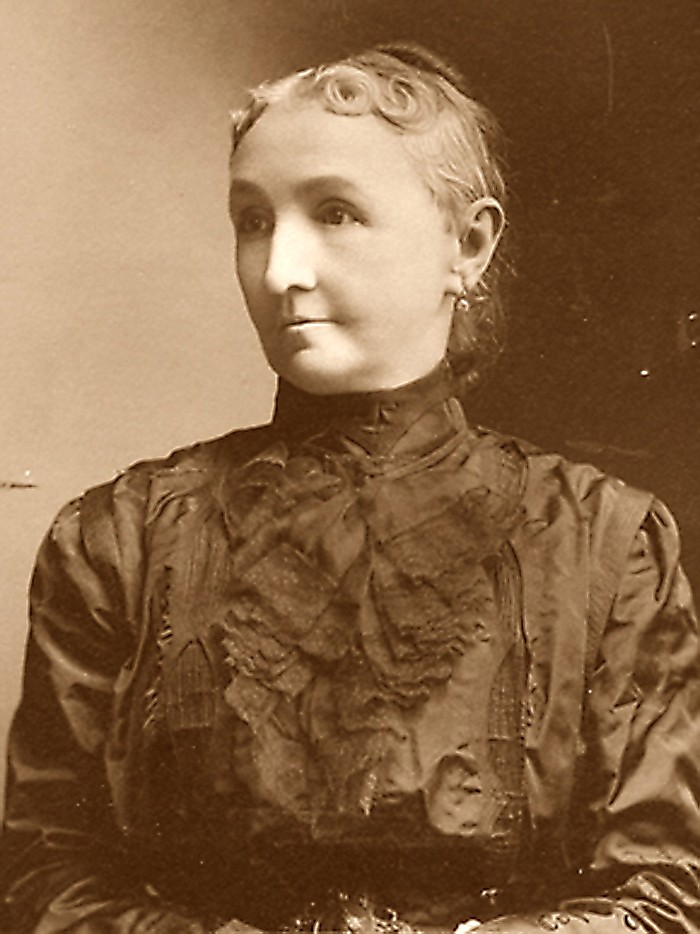Located at the site of an ancient Native American crossroads, St. Elmo was Chattanooga's first suburb.
Following the removal of Native Americans in 1838, large tracts of their land were sold by the state of Tennessee, including 5,000 acres purchased by James Whiteside, encompassing most of the northern end of Lookout Mountain.
Realizing the potential for tourism, Whiteside built a turnpike up the mountain and the grand three-story Lookout Mountain Hotel. Opening in 1855, the hotel and surrounding area became a popular tourist destination.
One of these visitors was Augusta Jane Evans. Born in Columbus, Ga., to a wealthy family who had fallen on hard times, Evans was 20 years old and had recently published her first novel, "Inez: Tale of the Alamo," written while her family was living in the frontier town of San Antonio, Texas.
In 1859, she published her second novel, "Beulah." Both novels were moderately successful and Evans was well known to many readers.
While on a visit to Lookout Mountain, Evans became acquainted with the eldest daughter of James Whiteside, Thankful, and her new husband, Abraham Malone Johnson, who had married in 1857 over the objections of her father. A.M. was just beginning to make his fortune in railroading, land development and other businesses.
Captivated by the vistas from Lookout Mountain, Evans claimed the area reminded her of the view from St. Elmo Castle overlooking the Bay of Naples in Italy.
While staying at the Lookout Mountain Hotel, she also met John Bynum of South Carolina.
Described by A. M. Johnson as "young, handsome, of commanding presence, well-educated, very wealthy ... and quick tempered," Bynum was said to have participated in several "affairs of honor," or illegal duels. Johnson claimed he had "never met such a character ... had he lived in days of knighthood he would have been a success."
According to Johnson, Evans, then in her early 20s and unmarried, made Bynum and "his idiosyncrasies a study." Later, she modeled the principal character in her book "St. Elmo" after John Bynum.
The Civil War interrupted tourism on Lookout Mountain. Evans returned to Chattanooga during the war to nurse her wounded brother, Howard, following the Battle of Chickamauga in 1863. Active in caring for the wounded and promoting the Southern cause, she found time to write another novel, "Macaria." Published in 1864, it was an immediate success. Widely read throughout the North and South, "Macaria" extolled the virtues of Southern women sacrificing for the Confederacy and promoted Southern independence.
The novel was banned in several Union Army camps, and copies were ordered burned by Gen. George Thomas, commander of the Union Army in Tennessee.
At the close of the war and in need of money, Evans published her most famous and best-selling novel, "St. Elmo," in 1866. The first chapter is set in the area at the foot of Lookout Mountain and features the blacksmith shop as well as other landmarks.
The romantic novel centers on the relationship between the lovely, devout Edna Earl and the cynical, worldly Clinton St. Elmo. The book includes a description of a party held on the lawn of J. G. Rawlings' home, located at the current site of the Incline parking lot. The party featured large sand boxes with burning torches and refreshments served from a gaily decorated table over-arched with an arbor of green pine boughs.
An immediate success, the book sold more than 1 million copies in just four months, inspiring namesake towns, hotels, steamboats and even cigars.
By 1885, A.M. Johnson had accumulated large plots of land on the east side of Lookout Mountain surrounding the farm that his wife, Thankful, inherited from her father.
Johnson had graded what became St. Elmo Avenue to 5th Street (now 45th Street). He divided the land into residential lots. Being president of the City Water Co., he laid a water line the length of the avenue. Soon trolley car tracks also ran down the avenue.
By 1886, Johnson owned the land, springs, roads, scenes and cabin described in the book. His new suburb was growing rapidly.
He prevailed on John Rawlings to host another garden party to celebrate the naming of Johnson's new town, "St. Elmo."
Gay Morgan Moore, retired from the faculty of Chattanooga State Community College, is the author of a number of books and articles, including Chattanooga's Forest Hills Cemetery and Chattanooga's St. Elmo. For more, visit Chattahistoricalassoc.org or call LaVonne Jolley 423-886-2090.
